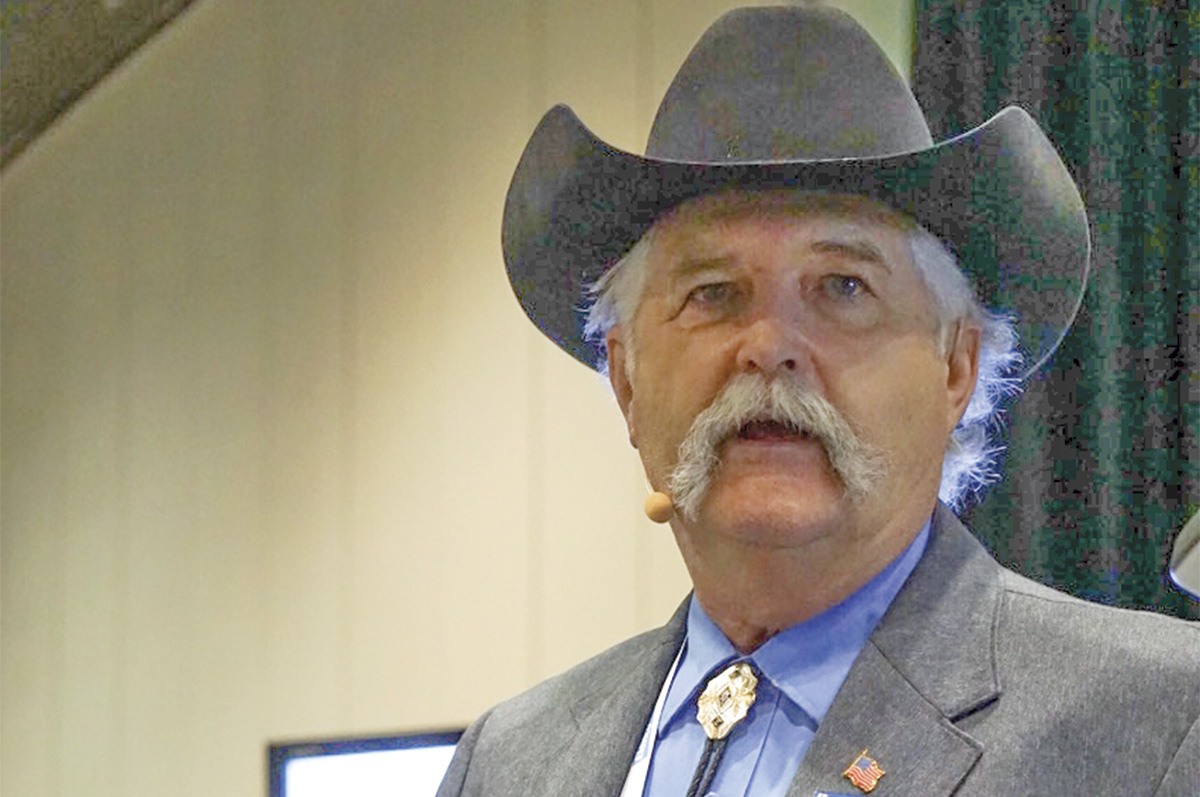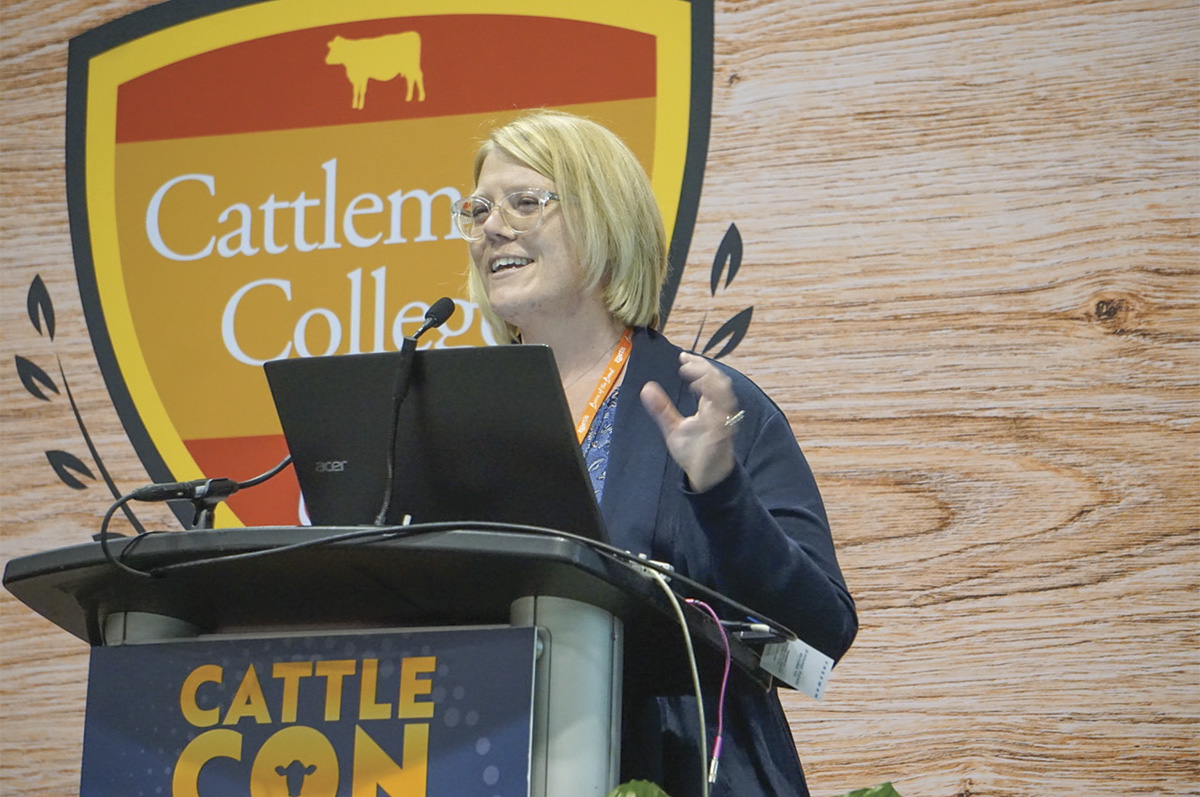It’s no secret that the cow herd is at an all-time low. As producers start to build herds back, creating and maintaining a herd health plan will be immensely important. Biosecurity, bovine viral diarrhea (BVD), vaccination programs and developmental programming were all topics discussed at the 2024 NCBA National Convention in Orlando, Florida, earlier this year.
Building back the cow herd with biosecurity in mind
When you purchase a replacement female for your herd, are you thinking about biosecurity measures? Well, you might want to, said Brian Dorcey, DVM, of Farmer's Business Network. Common diseases biosecurity measures can help prevent include Johne’s disease, BVD, pinkeye, salmonella Dublin and cryptosporidium, among others.
When you are purchasing animals, there isn’t a way to be certain of what they are bringing to your operation. Was there a commingling of herds? Nose-to-nose contact? Fenceline contact? Or even contact with wildlife? All of these things can infect an animal you are bringing into your herd.
It is first important to set your goals and build a plan on how you will be expanding your herd. Are you developing your own replacements, buying females or even buying cull cows to calve out? Each of these practices will have different biosecurity measures, just as each operation will. Work with your vet to make a plan that will work for you.
“Plan the work, and work the plan,” Dorcey said. “Don’t be buying yourself a headache.”
Dorcey added that it is important to get the new animals to the immune status of your own herd before introducing them. This will help limit any transmission and contain it before reaching the whole population.
When it comes to biosecurity, we often learn from when things have gone wrong. Don’t make that mistake, Dorcey said. Take precautionary measures.

George Perry discusses the impact BVD has on a herd, vaccinated or not. Photo by Abigail George.
BVD’s impact on a vaccinated herd
One of the most prevalent diseases biosecurity can help prevent transmission of is BVD. BVD can wreak havoc in herds that are vaccinated, well-managed and where producers are doing all the things right, said George Perry, DVM, of Texas A&M University.
The most common way for an operation to get BVD is through purchased animals pregnant with persistently infected (PI) calves, Perry said.
“The real damage comes from PI calves who can spread the disease throughout their lives, infecting other animals in the herd and calves in utero,” Perry said.
While the mother may have been tested, she could have had exposure while pregnant, infecting the calf. Calves can’t be tested until after they're born. By that time, the cow is usually already with the herd and the calf is spreading the disease.
BVD affects your operation and herd for more than one year. You may experience lost profits, expanded calving and breeding season, having to test in the following years, polluted water and exposed wildlife, among other things.
So, how do you handle BVD if it is in your herd?
- Test all calves at birth and get PI calves out of the herd before breeding.
- Have a well-designed vaccination program for your herd. Make sure you are using the right product at the right time.
- Take biosecurity seriously. Monitor animals coming in, and prevent BVD from coming in other ways. Remember the calf in utero; it is often forgotten!
It is important to talk to your local veterinarian because they know your operation and can give you specific recommendations to help eliminate BVD from your herd. BVD is not a reportable disease, meaning other operations are not required to tell you if their animals have it or have been exposed. Additionally, vets cannot share this information with other operations. Each state has different laws on how to handle PI calves, so the best thing you can do is work with your veterinarian.

Wayne Ayers conveys how vaccine strategies can be used to maximize cattle conception rates. Photo by Abigail George.
Vaccination strategies to maximize conception rates
When it comes to herd health, one of the most useful tools is a proficient vaccination protocol. However, it’s been shown that vaccinating cows close to breeding can lower conception rates, said Wayne Ayers, DVM, of Elanco Animal Health.
When it comes to choosing vaccines, producers have the option of modified-live or killed vaccines. A cow’s immune system responds to each one differently, mounting different immune responses. Because of this, vaccinating cows too close to breeding time can affect conception.
“Modified-live vaccines too close to breeding can modify pregnancy,” Ayers said. “Cattle need each type of vaccine; however, they need them at different times of their lives and gestation.”
This can have long-term effects on a herd. There may be open cows and cows that are late-bred, moving calving windows and affecting profitability.

Kimberly Vonnahme shares research on developmental programming and how better cow health will create better calves. Photo by Abigail George.
Better cow health for better calves
Herd health not only affects the cows currently in your herd but also their calves in utero. And, not even just the one calf but up to the second or third generation, said Kimberly Vonnahme, DVM, of Zoetis.
With the use of developmental programming, it has been found that nutrition during pregnancy plays a big role in the future performance of the offspring. Additionally, as the offspring (in this case, a heifer calf) is developing in the dam, it is also developing the ovaries and eggs of future generations.
“The stresses a dam experiences, such as nutrient restriction, transportation, heat stress, predation, et cetera, result in alterations to the fetal environment and epigenetic modifications,” Vonnahme said. “The offspring born to stressed dams exhibit changes to the epigenome, resulting in alteration in gene expression and phenotype. Epigenetic modifications in developing gametes can influence gene expression and phenotype of the future generation.”
Vonnahme then posed the question: “Beyond maternal nutrition restriction, can we optimize fetal development using dietary supplements?”
The placenta plays a key role in developmental programming. Blood is redistributed during pregnancy to the placenta for the fetus, bringing nutrients with it. Research is being done to look at the effect of melatonin as a feed additive, as it is a strong antioxidant and can redistribute blood, getting more nutrients to the fetus and potentially making up for previous poor maternal nutrition.
While this research is still ongoing, there are developments on the horizon when it comes to developmental programming, nutrition and overall herd health.









